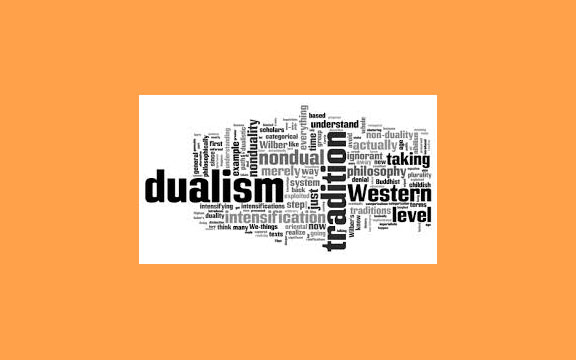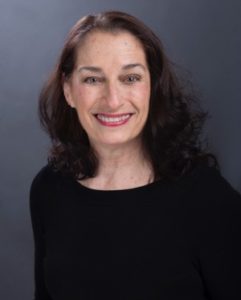 In this new column, Dale Ann Gray offers reflections on the yamas and niyamas of the Yoga Sutras, incorporating insights from classical Nondual Yoga. In this article, she offers an overview on the distinctions between the dualistic philosophy of Patanjali’s Yoga and classical Nondual Shaiva Yoga. In future articles, she will unpack each of the yamas and niyamas, in the light of non-dualism.
In this new column, Dale Ann Gray offers reflections on the yamas and niyamas of the Yoga Sutras, incorporating insights from classical Nondual Yoga. In this article, she offers an overview on the distinctions between the dualistic philosophy of Patanjali’s Yoga and classical Nondual Shaiva Yoga. In future articles, she will unpack each of the yamas and niyamas, in the light of non-dualism.
Traditionally called the restraints and observances, the yamas and niyamas form the base of a classical Yoga practice, both ethically and philosophically. The yamas and niyamas point to wholeness, to our truest, deepest Essence. Our True Nature is already free and sings with abandon. What may not be free is our experience of it, our recognizing it, and singing it into hearing with our whole being.
Although Patanjali rooted them in a dualistic key, the yamas and niyamas, with a little poetic license and playful imagination, can modulate to a nondual yogic harmony. So, giving you a peek at where we’re headed, let’s begin with the end in mind. A nondual hearing of the yamas and niyamas informs a Yoga practice and life by: affirming a unison with all; tuning to wholeness; helping each hear themselves as gentleness, truth, generosity, reverence, freedom, shining, contentment, fire, Self-Awareness, and Divinity; encouraging each to sing the beautiful melody they already are; and by hearing the One True Tone in all. Listen closely and you just might hear Swami Satchidananda’s voice! “Truth is one, paths are many.”
Dualism in Patanjali’s Yoga
Before we try to sing in a nondual key, let’s first hum a ditty of duality to understand why non-dualism matters and why it arose. Almost as a call and response, the philosophy of Sankhya answered the exclusionary practices of the Brahmins, who contend that Atman (Self) and Brahman (God) are one, but only the highest caste could ascend to the highest level of human experience.
Patanjali, singing in tune, for the most part, with Sankhya philosophy and contrary to the Brahmins, democratized Yoga with a one-person/one higher Self approach. However, Patanjali did accept the existence of Ishvara (personal God), that each individual has a higher Self and could realize that higher Self through training, hard work, and discipline. From Patanjali’s perspective (atheistic Sankhya plus Ishvara), the true Self (purusha) and all material manifestation (prakriti) never sing together in harmony. Both are real and exist separately, hierarchically with purusha imbedded within prakriti. According to Patanjali— working with celibate monks—the goal is to transcend the body, emotions, thought (those “unspiritual,” but very real material things) moving toward higher Consciousness, and thereby experience purusha in this life.
In order to encounter the true Self (purusha), mind and all things material (prakriti), with their many fluctuations (vrittis), must be silenced. Only when the material remains silent can we ever approach samadhi, restful being, or a consciousness stilled on perfection. We must, therefore, “restrain” our natural—even inherent—tendency toward violence, deceit, theft, sexual proclivity, and greed. Once we have mastered these, we can then learn to follow the “observances:” purity, contentment, discipline, self-study, and surrender to Ishvara.
A Nondual Approach
One of the questions that perplexed the critics of Sankhya was, “If purusha and prakriti are entirely separate and do not influence each other, then why, after yogis have come to experience their higher Self, did it make such a difference in their lives? For, they seemed to be much more equanimous and serene once they had tasted samadhi.”
Enter Advaita Vedanta, literally “after the Vedas,” a nondual Yoga philosophy that traces its roots back to the Vedas, the holiest and oldest scriptures of India. Patanjali had countered the Brahmins by declaring all material manifestation to be real. Advaita Vedanta, on the other hand, declared it a deception under the influence of maya, “an illusion of magic.” The only reality was the Absolute Brahman, which was also one with the true Self, Atman. Thus, reality is “not two” (advaita), but only by denying the reality of all things material (prakriti).
Denying the natural world did not sit well with householder yogis. In the Kashmir Valley, nondual Shaiva Yoga developed an evolutionary cosmogeny to explain the existence of all emanating from the union of Shiva and Shakti. Together, they form Sri Paramasiva, that from which all manifests, by which all is sustained, into which all dissolves, sometimes hidden, sometimes revealed. The sages of nondual Shaiva Yoga composed an all-inclusive ‘Oratorio of Life,’ nothing refused, every instrument and voice equally welcomed in its vital sound.
Why Does Any of This Matter?
“So why,” I hear you ask, “would anyone want to revisit a dualistic, monastic, celibate, ‘restrained’ philosophy such as Patanjali’s after finding the freedom and inclusivity of non-dualism?” Thanks for asking! A couple reasons come to mind. First, those who brought Yoga to the United States knew that the ethos of the era was not conducive to Hindu mythology. So, they introduced it in the dualistic, not-quite-atheistic prose of Patanjali—his Yoga Sutras—which were much more palatable both to the taste of the time and to a protestant work ethic of shoulds, shouldn’ts, oughts and ought nots. . . .
However, à la Bob Dylan, “The times they are a-changin’!” “Nones,” as in “Religious Affiliation: None” and SBNRs, as in “spiritual but not religious,” are the fastest growing “religious” designations in the U.S. today. America turns toward spirituality when they realize there must be more!
Second, Patanjali’s Yoga Sutras represent a significant epoch in yogic history. Ever since they gained a foothold in the U.S., they have dominated most Yoga practiced here, have become the standard to which other yogic philosophies are compared, and as such deserve our attention. So, how might we learn to sing in nondual key while still honoring Patanjali in all his dualistic-Sankhya-philosophic glory? We can take note from Christopher Hareesh Wallis, PhD, scholar of Sanskrit and Nondual Yoga. He advises, “Students of Nondual Yoga can incorporate all of Patanjali’s work, all his methodology, without incorporating his philosophy.” Just as Swami Satchidananda did in his translation and commentary on Patanjali’s Yoga Sutras, just as he did in his teaching, we can attune our ears to Patanjali’s method, and sing our nondual hearts out!
About the Author:
 Rev. Dale Ann Gray, PhD is a Yoga, pranayama and meditation, and Level 2 iRest teacher. She leads workshops, offering private classes and teaching in studios, churches, and online. She is also an ordained minister in the United Church of Christ and holds a Ph.D. in Theology.
Rev. Dale Ann Gray, PhD is a Yoga, pranayama and meditation, and Level 2 iRest teacher. She leads workshops, offering private classes and teaching in studios, churches, and online. She is also an ordained minister in the United Church of Christ and holds a Ph.D. in Theology.

